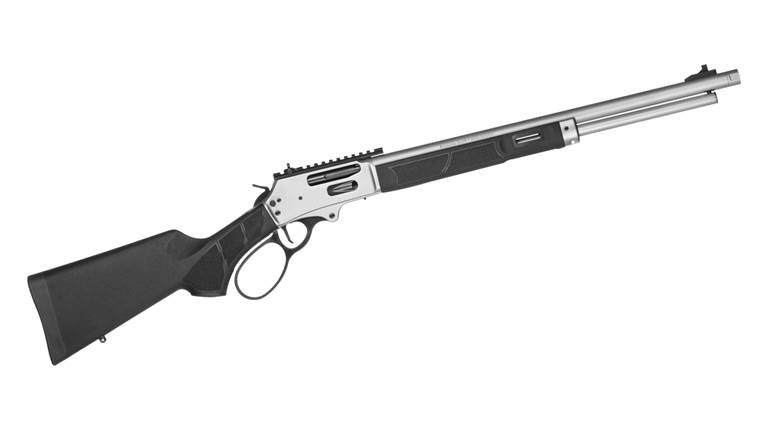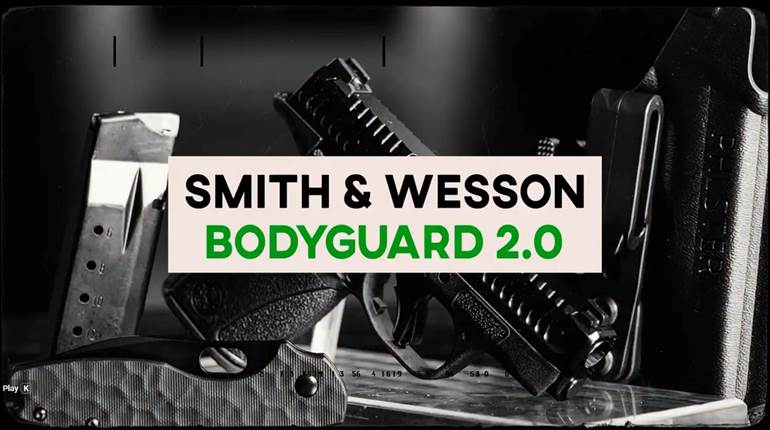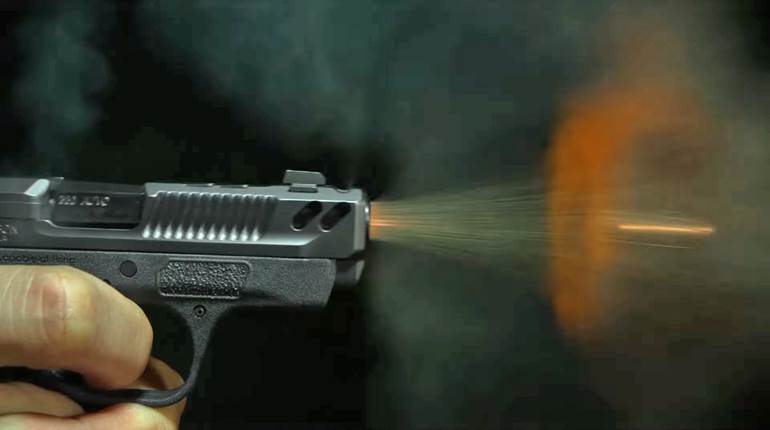
Unveiled at the NRA Annual Meetings & Exhibits in St. Louis, Mo., Smith & Wesson’s newest product, the M&P Shield, is sure to turn heads. The topic of internet buzz and industry speculation, Smith & Wesson’s cryptic “Shield Yourself” ad had people wondering just what the folks at the Springfield, Mass., plant were up to. In preparation for the launch, a troop of writers, myself included, were invited up to draw back the curtain and pull the trigger on this exciting new pistol.
Designed for concealed carry, the M&P Shield enters the vaunted handgun line as the smallest and lightest offering to date. Only 6.1-inches long, 4.6-inches tall and 19 ounces in weight (unloaded) the Shield is super compact, but more striking than these dimensions is its sub-1-inch width. This gun is slim. The frame is 0.95 inches at its thickest, and the pistol’s fattest components, the grips, measure in at a scant 0.98 inches. With such a slight profile it would seem reasonable that some features had to be left on the proverbial cutting room floor. Not so with the Shield. With a magazine release button, take-down lever, slide-stop and thumb safety switch, nothing is missing from the frame’s left-side control panel.
The Shield is available chambered either for 9 mm Luger or .40 S&W, meaning this compact package brings full-size power. The pistols will ship with two, single-stack magazines; one flush-fitting and capable of holding seven rounds of 9 mm or six rounds of .40 S&W, the second with plus-one additional capacity and stock extension for a full three-finger grip. The Shield follows M&P protocol in construction, the molded polymer frame utilizes texturing standard in S&W’s patented Palmswell Grips, and the steel slide and 3.1-inch barrel are finished with the very durable black melonite coating. It is important to note, however, that the Shield’s grips are not interchangeable like other M&P models, rather they are fixed and of medium size, according to Palmswell dimensions. The sights are of the three-dot configuration, and as with other guns in the M&P line, the rear sight is windage adjustable.
Mechanically, the Shield will be familiar to those with M&P experience, and it’s similar to many popular striker-fired handguns. A stainless-steel chassis houses the trigger assembly, which includes a sear release lever that can be accessed through the slide’s ejection port when locked to the rear. The sear release can be manipulated with a pen or similar tool, and it makes disassembly possible without having to pull the trigger—an increasingly prevalent requirement for law enforcement service arms. The trigger itself has been upgraded and is probably representative of what will be used in all future M&P production. While the previous design was praised for having a very smooth, single-action pull, the trigger’s reset was often very hard to detect requiring a near full-length pull for each follow up shot. In the Shield, the trigger remains smooth and crisp, but has been re-engineered to provide a very clear reset with audible and tactile cues.
While at Smith & Wesson, I was able to get some time—a lot of time actually—behind the trigger and I have to say I enjoyed every minute of it. I sent approximately 300 rounds downrange without a single malfunction. Expand that to include the nine other writers firing a similar number of rounds and the result is 10 M&P Shields firing 3,000 shots without a single gun-induced stoppage (there were approximately five failures during the two days of shooting, all stemming from the same problem with the ammunition). Needless to say I was impressed, and looking at a range floor completely covered in brass, it is safe to assume my colleagues were as well. The Shield has an excellent natural point, a characteristic demonstrated in some one-hand drills we conducted, and it proved surprisingly accurate even out to 25 yards.
As if this new gun were not appealing enough, Smith & Wesson assured us that a host of Shield accessories would be available for sale at launch. Bucking the traditional pattern of introducing a firearm and letting the accessory market respond, S&W made shrewd use of non-disclosure agreements with holster and sight makers to ensure gear for the new pistols would be on the market from day one. The stable of companies on board for the Shield launch includes, but is not limited to, Blackhawk, Blade-Tech, Crimson Trace, De Santis, Fobus, Galco, HiViz, Laserlyte, Uncle Mike’s and XS Sights. This may be too much for the gear-dos out there, but fear not, suggested retail for the Shield is only $449, and real-world prices are expected to be lower, meaning those anxious to get their hands on the gun should have money to spare for accessories.
Accurate, reliable, concealable, accessorized and affordable, the M&P Shield has most everything law enforcement professionals and self-defense practitioners could ask for. Stay tuned for a full review and evaluation of the Shield, and further coverage of the NRA Annual Meetings & Exhibits in American Rifleman magazine.





































